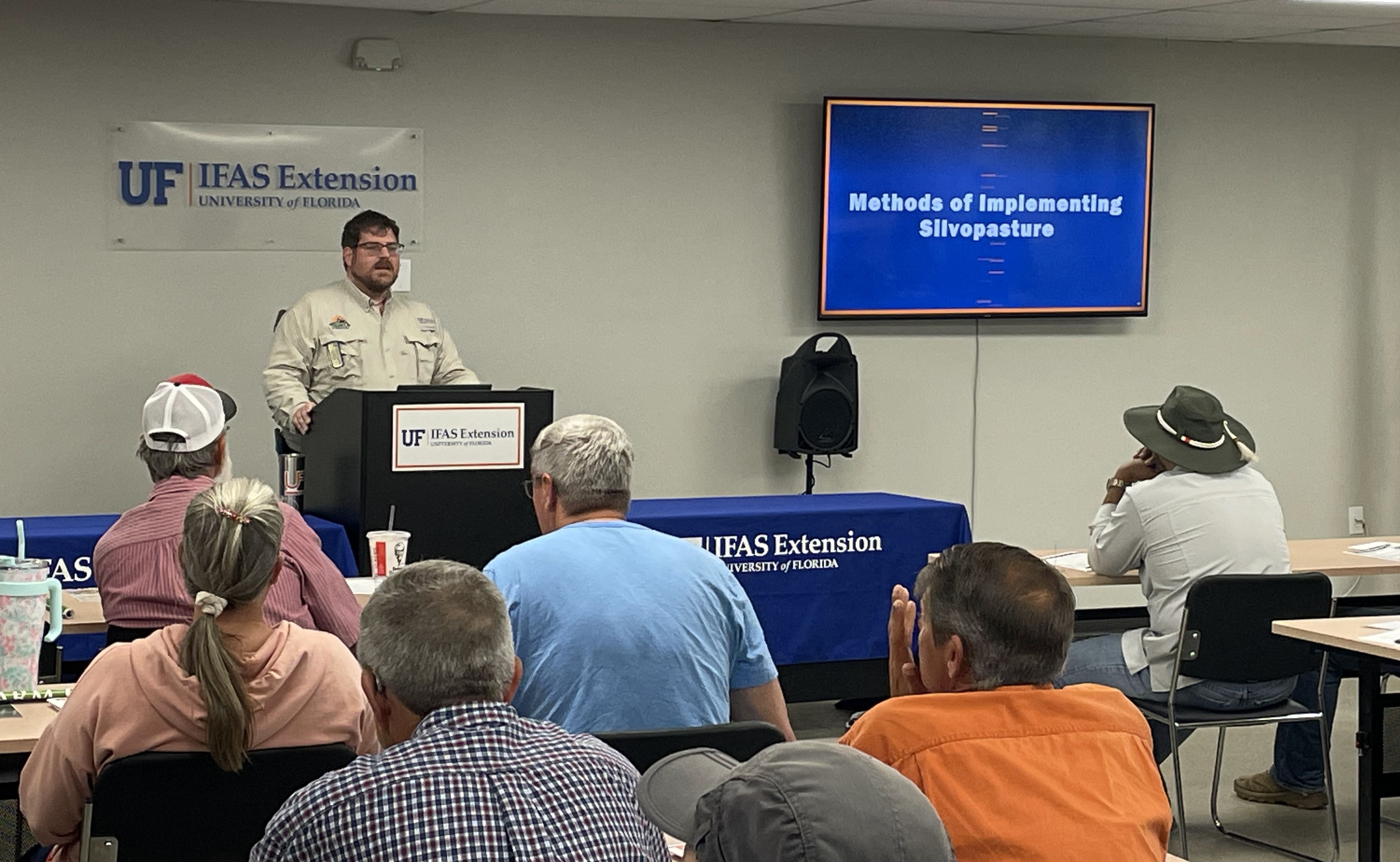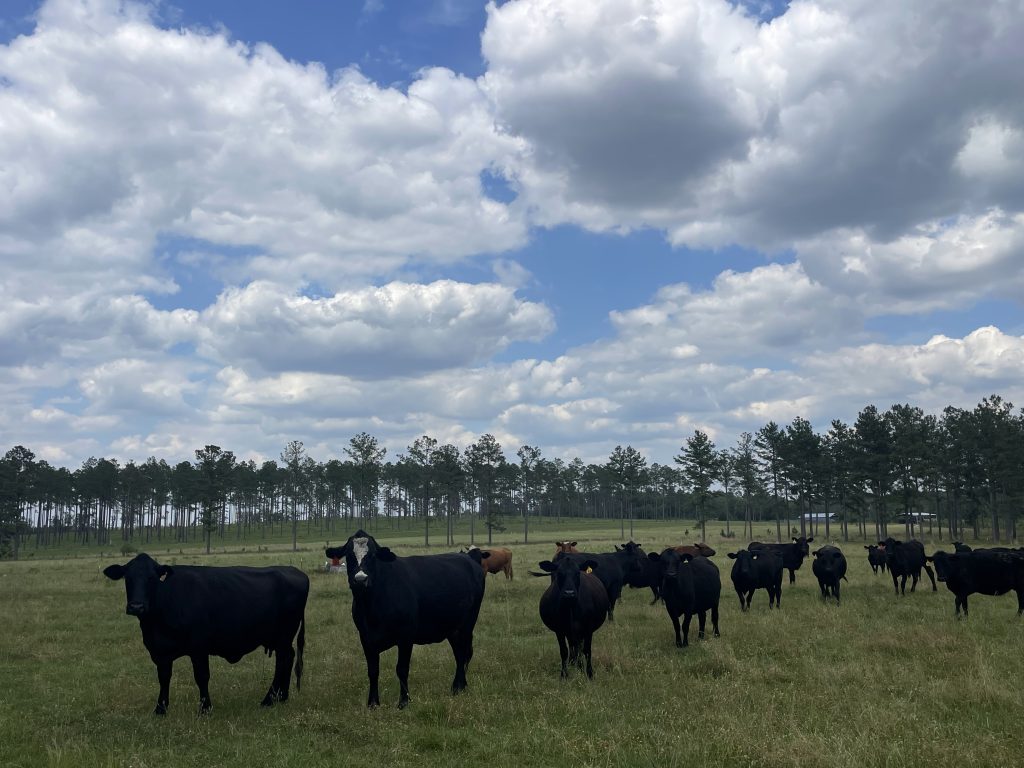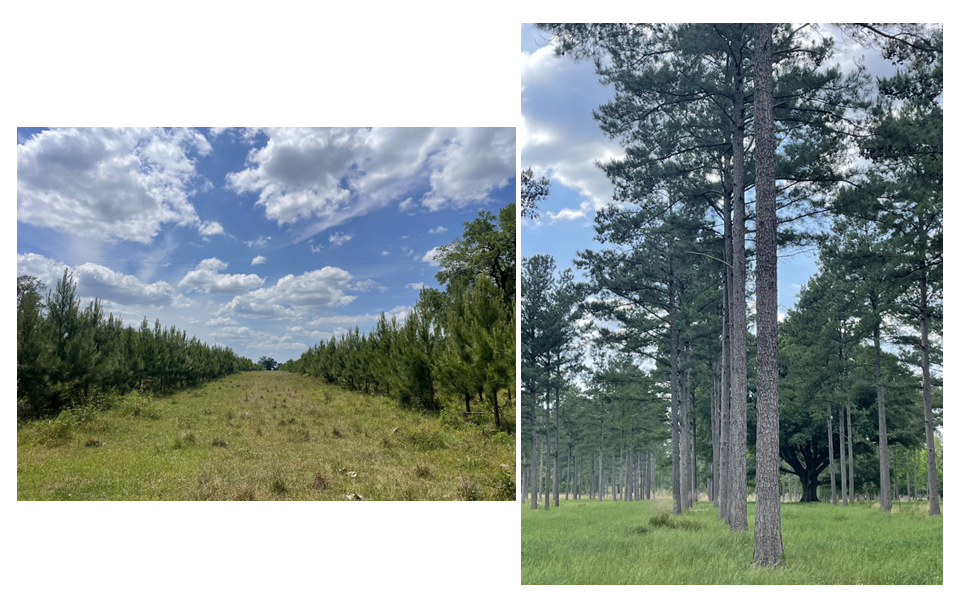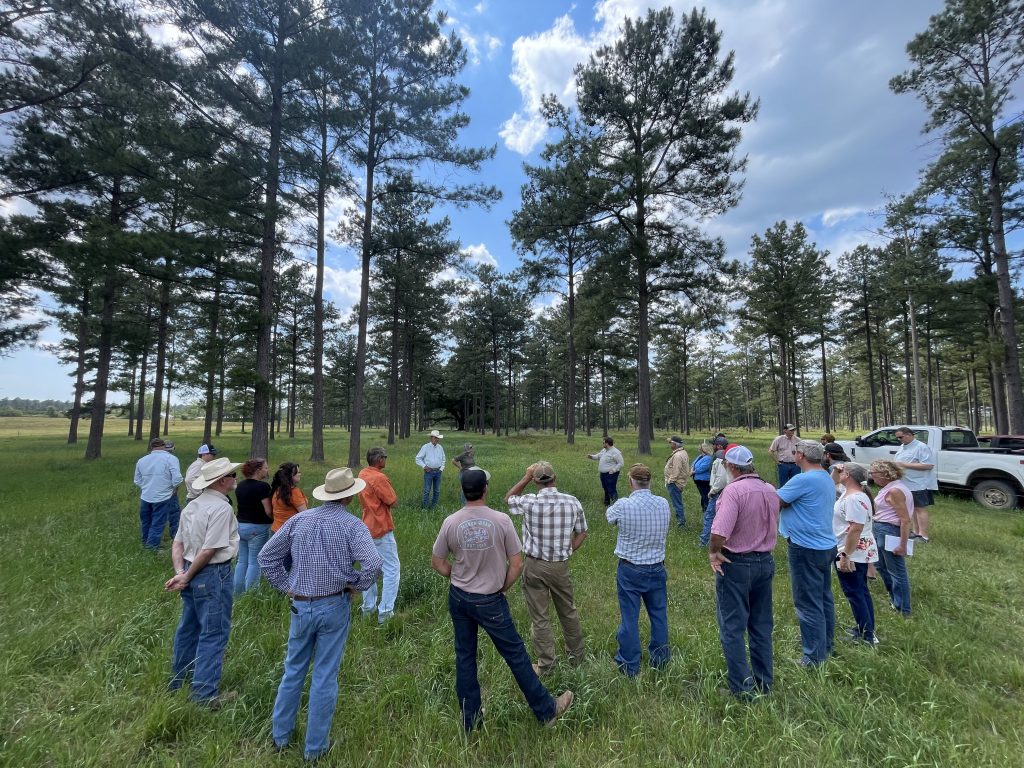
Forestry Agent Ian Stone Starts the Meeting and Teaches Participants about the Nuances of Timber Management in Silvopasture vs Traditional Timber Systems – Kacey Aukema
The UF/IFAS Extension Northwest District hosted a well-attended Silvopasture workshop and farm tour in Chipley on Friday April 26th. What exactly is silvopasture you may wonder? Ian Stone, the multi-county Forestry agent based in Walton County, did a great job in introducing the topic and overviewing how forestry management in silvopasture systems differ from more conventional timber systems in the first talk of the meeting. Silvopasture combines timber production and pasture production in the same area to allow for grazing animals to utilize the space in between tree and underneath tree rows for foraging. Silvopasture stands are much less dense than traditional stands of planted pines, to allow for adequate space for forage to grow and adequate sunlight to support forage growth. Implementing this kind of system can be achieved through thinning of an existing conventional timber stand “sIlvopasture by subtraction”, or intentionally planted in a density that would be conducive to forage production from the get-go. Ian’s presentation highlighted the attractive aspects of silvopasture production systems on how they facilitate multiple enterprises on one piece of property to diversify potential income streams, as well as the inherent constraints that these systems have when compared to timber or pasture/cattle production separately.
Okaloosa County Agriculture Agent Jennifer Bearden followed up Ian’s talk with a presentation on soils and soil management for silvopasture production. Depending on the tree species and forage species or variety optimal soil pH levels and fertilization needs may not line up perfectly for the grass vs. trees. Thus, proper soil testing to match the site with appropriate varieties and/or to guide how to amend the soil is important to balance the needs of the tree and forage crops being grown concurrently in these systems.

Cattle On The George And Pat Owens Property Are Rotated Between Conventional Pasture And Silvopasture Paddocks. – Kacey Aukema
Mark Mauldin, Washington County Interim Extension Director, and Nick Simmons Escambia County Extension Director also contributed with talks focusing on the interconnected topics of forage and livestock management in silovpasture systems. Not all forage varieties are well suited for the partial shaded environment and soil conditions that would be expected under silvopasture production. Therefore, picking the right species/variety for a particular site is important. Forage and livestock production in silvopasture systems often benefit from rotational grazing, therefore it is important to keep that in mind for pasture fencing and facilities planning to facilitate ease for rotating animals in and out of paddocks. One advantage of silvopasture systems for livestock and forages is from the partial shade provided by the trees. Shade reduces heat stress on the animals and can extend growth of some forages. For warm-season forages the partial cover provides a degree of frost protection, and for cool-season forages the shade provides cooler temps later into the spring.

A ~5 Year-Old Stand Of Pines Planted For Silvopasture Following Damage From Hurricane Michael Currently Being Grazed (Left), And A 20+ Year Old Silvopasture Stand (Right) – Kacey Aukema.
Following the speaker program the attendees visited several different sites in silvopasture on the property of Geroge Owens–a local farmer and respected expert in silvopasture in the Southeast. Mr. and Mrs. Owens presented the site history at various stands of different ages of timber, and expounded on the strategies and experience they had gained over the years in managing the trees, pasture, and cattle on their operation. This included the impact of Hurricane Michael on their farm in 2018 and recovery since then. George and his wife Pat shared a wealth of experience during the tour and answered questions that attendees had about implementing these kinds of systems on their own properties.
We thank The Owens’ for hosting us on their property. Also we are grateful for The Florida Land Steward Program and Farm Credit of NW FL for sponsoring this event organized by Ian Stone, Mark Mauldin, and Chris Demers (Florida Land Steward Program Coordinator). We hope to continue to offer more educational programs related to silvopasture into the future.

George and Pat Owens Share Their Wealth of Experience with a Group Touring Their Property – Kacey Aukema
To learn more about Silvopasture Systems for the Southeast see this great article from Mississippi State:
Silvopasture: Grazing Systems Can Add Value to Trees
Written By: Kacey Aukema, Agriculture Extension Agent in Walton County
- Aquaculture 101: Aquaculture in The USA - May 12, 2025
- Aquaculture 101: The History of Aquaculture - April 25, 2025
- A Northwest Florida Winter Wonderland - January 31, 2025
